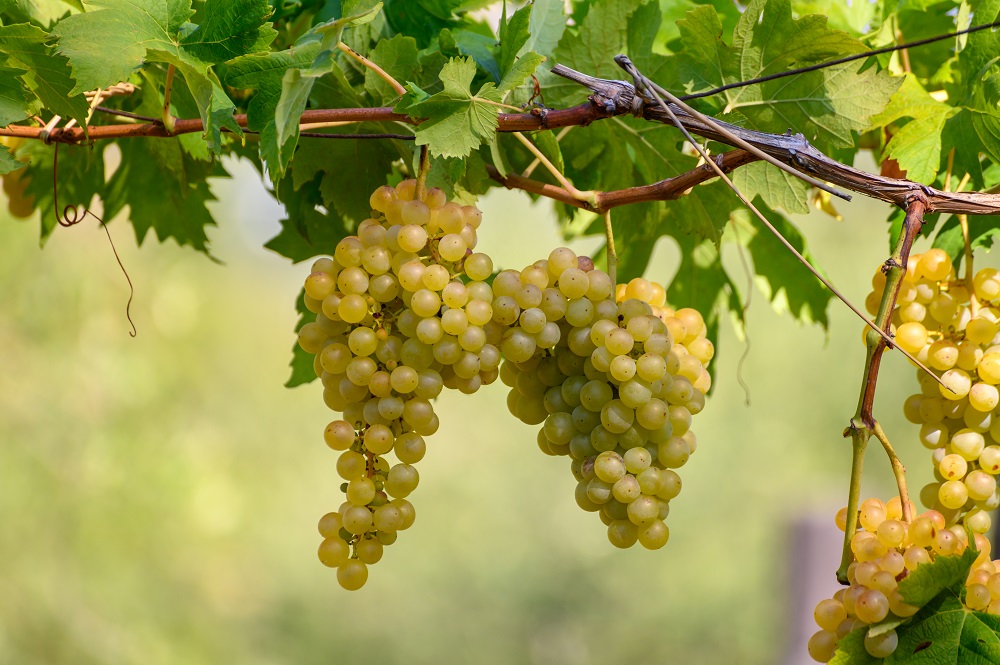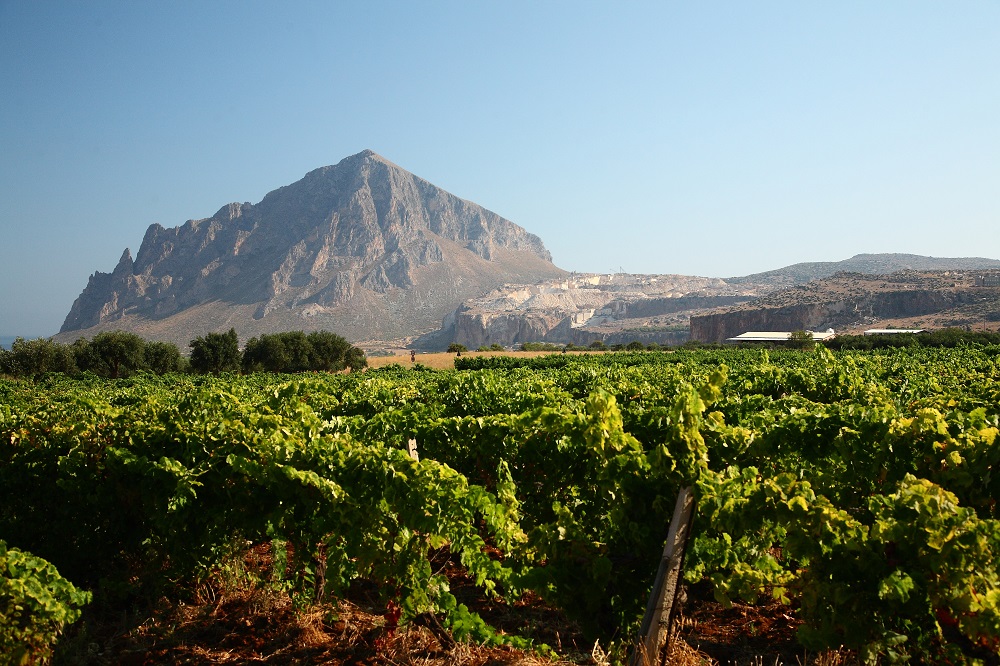
Aligoté Grape Variety: Burgundy’s Other White Grape:
August 13, 2022
Discover Aligoté, the dazzling white wine grape from Burgundy, boasting zesty, citrus-infused charm. 🍇🍷 Experience French winemaking at its finest!
By: James lawrence / Last updated: February 3, 2025
Estimated reading time: 9 minutes
The Italians have a knack for reinvention, motivated by pride and commercial pragmatism. Take, for instance, the esoteric white grape known as Grillo. For centuries, Grillo has been used to produce Sicilian Marsala wine, a fortified wine style that sadly fell out of favor in the 20th century. Once the toast of Europe’s aristocracy, most consumers now use Marsala as a cooking wine. With falling sales and squeezed margins, winegrowers knew something had to be done.

Guide to Italian White Wine: Read more
As a result, producers began to switch allegiances and make aromatic dry whites from the grape, often blended with Inzolia and Catarratto – two varieties indigenous to Sicily. Moreover, there is no paucity of demand for high-quality white wines in the global market, which has helped save Grillo from total obscurity. Grillo is racy and full-bodied, typically imbued with a saline quality, with hazelnuts, citrus, and lanolin flavors. It is one of Italy’s most delightful drops. And, best of all, few of your friends will have heard of it. Bragging rights, indeed!
The Mediterranean’s largest island has a great deal to offer. History buffs, gastronomes, sun worshipers, and oenophiles – Sicily appeals to a wide variety of visitors. Its cultural heritage, meanwhile, has no equal in Western Europe: the island has been a magnet for colonists and invaders since the dawn of civilization. And so, as Greek, Arab, and Norman conquerors came and went, they left behind a rich and eclectic mosaic of cultural treasures – including winegrowing.
Yet the origins of Grillo still need to be clarified. Historians have long believed that Sicilian grapes are the ancestors of varieties introduced in the 8th century BC after the Greeks established a trading empire in the Mediterranean. So, one school of thought advances the notion that Grillo is a descendant of these ancient vines – some believe that Cataratto and Muscat de Alexandria interbred to create Grillo. Meanwhile, other viticulturists argue that the grape is indigenous to Puglia and exported to Sicily at some point in the pre-Roman era. After conquering mainland Italy and Sicily in 210 BC, the Romans established a flourishing center of agriculture and trade across the island. Today, remnants of their legacy can be seen all over Sicily, from Palermo’s Roman masterpiece to the amphitheater at Taormina.
However, the Roman political order collapsed in 476 AD, paving the way for centuries of violence and chaos. Several major Northern and Western European powers attempted to capture Sicily, including the Vandals, Arabs, and Normans. The latter established the County of Sicily in 1071 following the Norman conquest of Italy’s southern peninsula. In the 12th century, this was restyled as the Kingdom of Sicily, encompassing Campania, Sicily, Puglia, Calabria, and Basilicata. For a time, stability reigned.
But the Sicilians are a proud people – domination and subjugation have always been fiercely rejected by the islanders. Things came to a head in 1282 when a revolt known as the Sicilian Vespers successfully overthrew Charles of Anjou’s stranglehold over the island. In the bloody aftermath, the French king licked his wounds, retreating to the safe territory on the mainland. Sicily, meanwhile, was absorbed into the Aragonese Empire that same year.
Many centuries would pass before Sicily became part of a unified Italian state in the 1860s. By this point, wine growing across the island had become vital to its prosperity. Sicily’s most famous vineyard is undoubtedly Mt. Etna, one of the world’s largest active volcanoes! The Romans were particularly referential toward the mighty giant, believing that Vulcan, the god of fire, forged Etna. Today, the lower slopes are carpeted in vines, used to produce some of Italy’s most exciting and original wine styles.
The story of Marsala, however, takes place on the island’s western tip. Grillo has long been a vital ingredient in Marsala, Sicily’s classic fortified wine that fell out of fashion in the 1900s. The center of production is the town of Marsala itself – sea breezes and the influence of Mount Erice’s cool vineyards. Marsala is best described as a distant cousin of Sherry, invented by British settlers to fortify Nelson’s navy when it was based in Naples during the Napoleonic Wars.
In the 18th century, British merchant John Woodhouse visited Sicily on a trading expedition. After tasting a sweet amber nectar called Marsala, he promptly requested several barrels to be shipped back to England. However, Woodhouse decided to add grape spirit to the wine to protect it from oxidation during the journey. This practice eventually became standardized – a new category of fortified wine was born. In the late 19th century, Marsala was the toast of Europe.
Of course, nothing is immune from the vagaries of fashion. Marsala needed a consumer audience as the demand for dry wines surged in the 20th century. Thankfully, growers have been able to rebrand Grillo as a source of premium dry whites. In addition, the grape is relatively straightforward to grow: Grillo delivers a modest crop of berries, while fungal diseases are almost unheard of in the arid climate of western Sicily. Best of all, Grillo is particularly good at retaining its acidity in the harshest heat, producing a very aromatic style of wine.
Today, many leading Grillo vineyards are reserved for producing dry whites. This would have been considered sacrilegious a century ago, but times change; there is far greater economic security in marketing a rival to Pinot Grigio and Greco di Tufo. As a result, winemaking is often a mirror image of the techniques adopted across Italy. Typically, hand-harvest grapes are protected from oxygen before they are gently pressed and drained into a settling tank. The must is then fermented at low temperatures in stainless steel, producing a very fruity style of wine. Although winemakers may elect to age their wines on the fine lees (yeasty sediment), maturation in new barrique is very rare.

However, we should be wary of throwing the baby out with the bathwater. Although the production of high-quality Marsala has morphed into a very niche enterprise, the tradition is still alive. Leading firms such as De Bartoli and Nino Baracco refuse to abandon the region’s birthright, even if global demand remains a shadow of its former self.
From their perspective, the creation of Marsala wine has changed relatively little since the 1800s, despite the march of new technology and ideas. The most important thing to understand about Marsala is that blending is central to the entire process – both in terms of grape varieties and vintages. After the harvest, white grapes – Grillo, Cataratto, and Inzolia – are crushed and fermented in large oak vats called botti. Cheaper brands will be fortified at this stage with grape spirit and then sweetened with either boiled-down must (mosto cotto) or partially fermented wine (mistela). They are often bottled approximately one year after the harvest – or sooner.
At the opposite end of the spectrum are the long-aged, stupendous Marsala wines of De Bartoli. Like the great bodegas of Jerez de la Frontera, the house embraces the solera method of wine maturation, ensuring a consistency of style and quality across the range. This involves the constant – and carefully timed – fractional blending of wines from different vintages. In the historic cellars of De Bartoli, you’ll observe barrels stacked on top of one another – there are typically five rows or layers of wine aging.
The youngest wines are found on the top level, while the base of the stack contains wines aged for a minimum of five years before bottling. As Marsala is drawn off the butt, it is replenished with younger wines from the barrel immediately above – only a third of the blend is removed at any time. Unlike cheaper examples, Marsala’s crème de la crème is usually fortified after maturation in solera. It may then be sweetened, although top-notch Marsala is often bone dry. In certain cases, the winemaker will refrain from fortification at all. Such wines are rare – the DO rules will not recognize them. But they can taste magnificent: a beguiling and complex wine full of caramel and nutty flavors. Fortified examples, however, will be classified as vergine or solera stravecchio. Some of the best wines are aged for over 15 years.
Grillo is a Sicilian treasure: a grape variety for all contexts, seasons, and gastronomic occasions. Indeed, whether you’re drinking a mono-varietal still white – increasing in popularity – or a long-aged bottle of Marsala, there are wonders to be discovered here.
Dry white Grillo, racy with the scent of marine air, is the quintessential Mediterranean aperitif. Thanks to the grape’s high acidity—flabby wines are almost unheard of—Grillo refreshes the parts other wines cannot reach. But it can also pair brilliantly with several dishes; chicken liver pate calls for a pungent white and plenty of acid, exactly what Grillo delivers. Prawns, shrimp, or langoustines are another reliable choice. Finally, smoked salmon always needs a bone-dry but aromatic white—why not Grillo?
Richer, fuller wines can handle something more ambitious and sophisticated. Recently, we tried risotto with fungi porcini with an older bottle of Grillo, imbued with tertiary notes of honeysuckle and lavender. It was a fantastic match, with the white’s mineral acidity cutting across the creaminess of the rice. Mayonnaise is another surprisingly good pairing – egg-based sauces need a contrasting bite in the wine. So step up, if you please, Grillo.
Of course, Marsala is usually relegated to the role of cooking wine. This is a grave mistake: long-aged Marsala can bring so much to your dinner table if you stick to reputable houses and brands. Believe it or not, the best dry styles can shine alongside richly sauced white fish and sweetbreads; the standard pairing is supreme white Burgundy. However, even the best Chardonnay from the Cote d’Or can be overwhelmed by fish that hasn’t been grilled or cooked Meunière. Yet Marsala, heady with the scent of slowly oxidized Grillo, is not fazed. It offers that rare combination of supreme complexity and bracing freshness that can handle almost any gastronomic eventuality. We can only hope that more wine lovers come to appreciate its immense charms. Speaking for ourselves, we’re already hooked!
If you would like us to customize an exclusive luxury tour, contact us and let us know your travel plans. We offer luxury food and wine tours for private groups of a minimum two guests. In addition, all of our private, chauffeured tours are available year-round upon request.

